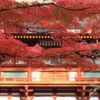National Treasures of China: The Cultural and Historical Significance of Valuable Artifacts

National treasures are the jewels of a nation’s cultural heritage. They represent not only the artistic prowess and technological innovations of a civilization but also the profound history, values, and traditions that define a country. In China, the concept of national treasures is deeply rooted in the nation’s ancient history and the ongoing legacy of its dynastic rulers. Over the millennia, China has accumulated a remarkable collection of objects considered to be priceless, embodying the nation’s cultural identity, artistic achievements, and national pride. These items have often played a central role in defining China’s status as a world power, both historically and in the modern era.
This article explores some of the most significant national treasures in China, examining their historical, cultural, and symbolic significance. From the renowned artifacts from imperial tombs to intricately designed jade works, we delve into the reasons why these treasures are celebrated and preserved as national icons.
The Role of National Treasures in Chinese Culture
In China, national treasures are not just physical objects—they are regarded as symbols of the nation’s cultural heritage, legacy, and continuity. The preservation of these treasures is viewed as a moral and civic duty, as they reflect the brilliance of past civilizations and provide a bridge between ancient times and the present. National treasures are highly valued not only for their craftsmanship but also for their role in maintaining national pride and identity.
From the Tang Dynasty to the Qing Dynasty, many of China’s national treasures were created during periods of significant political stability and cultural flourishing. These treasures include paintings, ceramics, jade carvings, bronzes, textiles, and historical manuscripts. They have been carefully preserved by generations of scholars, artisans, and historians, contributing to the cultural richness of China today.
Jade: The Eternal Symbol of Chinese Culture
Jade holds a special place in Chinese culture and is considered one of the most precious materials in the country. From the earliest dynasties to modern times, jade artifacts have been symbols of power, purity, and immortality. As one of the oldest and most valued materials in Chinese art, jade has been used to create a wide variety of objects, from ceremonial items to personal adornments.
One of the most famous jade pieces in China is the He Shi Bi, an ancient jade disk that dates back to the Warring States period (475-221 BCE). The He Shi Bi is renowned for its exquisite craftsmanship and historical significance. According to legend, this jade disk was so valuable that it was used as a bargaining tool during power struggles between ancient Chinese states. The He Shi Bi eventually became the symbol of imperial authority, and its legacy continues to influence Chinese culture to this day.
Jade objects have also been used in burial rites, with jade burial suits being among the most significant national treasures. These suits, made of thousands of jade pieces sewn together, were believed to protect the deceased on their journey to the afterlife. The Jade Burial Suit of the Han Dynasty is a prime example of such treasures. It was found in the tomb of a Han prince and represents the pinnacle of jade craftsmanship, reflecting the emperor’s power and the belief in jade’s divine qualities.
Bronze: The Artistic and Ceremonial Legacy of the Shang and Zhou Dynasties
Bronze objects from the Shang (1600-1046 BCE) and Zhou (1046-256 BCE) Dynasties represent some of China’s earliest and most important national treasures. Bronze was used extensively during these periods for creating ritual vessels, weapons, and tools. These objects were not only functional but were also imbued with symbolic meaning, often representing the connection between the ruler and the divine.
One of the most iconic bronze pieces from this era is the Zun, a type of ceremonial wine vessel. The Zun was often inscribed with intricate designs and symbols, and it was believed to be used in sacrificial rites dedicated to the gods and ancestors. These objects were typically placed in royal tombs and temples, where they were seen as essential tools for ensuring the prosperity and continuity of the ruling dynasty.
The Ding, a large, three-legged bronze cauldron, is another significant artifact from the Shang and Zhou periods. The Ding was used for cooking, but it also had deep spiritual and political significance. It symbolized the ruler’s power and authority, and it was often inscribed with inscriptions that linked the ruler to the gods. The most famous Ding is the He zun Ding, an artifact with historical inscriptions that reveal important aspects of ancient Chinese political and religious life.
The Terracotta Army: An Unmatched Royal Treasure
Discovered in 1974, the Terracotta Army is one of the most significant archaeological finds of the 20th century. This collection of life-sized statues, buried with the first emperor of China, Qin Shi Huang, was created to protect the emperor in the afterlife. The Terracotta Army is considered a national treasure not only because of its historical significance but also because it is a masterful example of ancient Chinese craftsmanship and engineering.
The Terracotta Army consists of over 8,000 soldiers, horses, and chariots, all carefully crafted from clay and painted with intricate details. Each figure was made with unique facial features and expressions, making them appear lifelike. The army reflects the emperor’s desire to maintain his military power even in the afterlife, and it represents one of China’s greatest archaeological achievements. The site where the Terracotta Army was discovered, near Xi’an, has since become one of China’s most important tourist destinations.
Chinese Ceramics: A Tradition of Excellence
Chinese ceramics are considered among the finest in the world, with a history dating back thousands of years. From the Tang Dynasty (618-907 CE) to the Ming (1368-1644) and Qing Dynasties, China has produced a wide range of ceramic items, from everyday pottery to exquisite porcelain pieces that are prized around the globe. These ceramics not only serve as evidence of China’s advanced technological capabilities but also represent the aesthetic tastes and cultural values of their time.
One of the most famous forms of Chinese ceramics is blue-and-white porcelain, which originated during the Tang Dynasty and reached its height of perfection during the Ming Dynasty. The intricate designs and vibrant colors of these porcelain pieces make them highly valuable. Ming Dynasty vases and plates, decorated with floral and animal motifs, are considered national treasures due to their artistic and historical significance.
Another famous example of Chinese ceramics is the Tang Dynasty glazed pottery, often referred to as “Tang sancai.” These ceramics were known for their vibrant, multi-colored glazes, which were created using advanced kiln techniques. Figures such as Tang horse statues and camels are highly valued for their cultural symbolism, reflecting the importance of the Silk Road trade routes during the Tang era.
Calligraphy and Ancient Manuscripts: Preserving China’s Literary Legacy
In addition to tangible artifacts, China’s literary treasures also hold significant cultural value. Ancient manuscripts, calligraphy, and historical texts are considered national treasures, reflecting China’s deep intellectual and literary traditions. One of the most famous works in Chinese history is the Dao De Jing by Laozi, a philosophical text that has shaped Chinese thought for centuries.
The Tang Dynasty saw a flourishing of calligraphy, with master calligraphers such as Wang Xizhi leaving behind works that are still revered today. His famous work, The Preface to the Orchid Pavilion, is considered a pinnacle of Chinese calligraphy and is regarded as a national treasure. Chinese calligraphy, as both an art form and a mode of communication, continues to be highly valued, with works by renowned artists being carefully preserved in museums and private collections.
The Forbidden City: A Repository of Royal Treasures
The Forbidden City in Beijing, once the imperial palace of the Ming and Qing Dynasties, is home to a vast collection of national treasures. This sprawling complex is not only a magnificent example of Chinese architecture but also houses an extraordinary collection of art, including paintings, ceramics, and ancient artifacts. Many of these items are regarded as priceless treasures, reflecting the grandeur and cultural wealth of the Chinese imperial court.
Among the treasures housed in the Forbidden City are golden imperial seals, ceremonial robes, and jewelry, each carefully crafted to symbolize the power and authority of the emperor. The palace also contains an extensive collection of ancient scrolls and literary works, offering insight into the intellectual and artistic pursuits of China’s imperial rulers.
Conclusion: Preserving the National Treasures of China
National treasures are the heart and soul of China’s cultural heritage. These artifacts and objects are not only valued for their artistic beauty but also for their profound connection to Chinese history and identity. Whether through jade, bronze, ceramics, calligraphy, or monumental archaeological finds like the Terracotta Army, China’s national treasures represent the triumph of human creativity and the enduring legacy of one of the world’s oldest civilizations.
Today, these treasures are carefully preserved and studied by scholars, historians, and archaeologists, ensuring that they continue to inspire future generations. As symbols of China’s rich cultural history, they remain central to the nation’s pride and its place in the world. Through the protection and celebration of these artifacts, China not only safeguards its past but also reaffirms its commitment to cultural preservation and appreciation.

